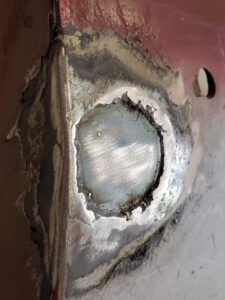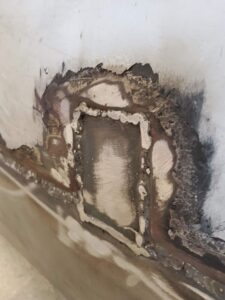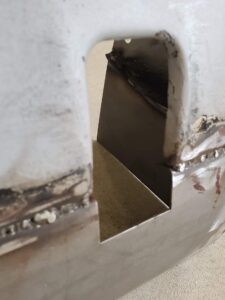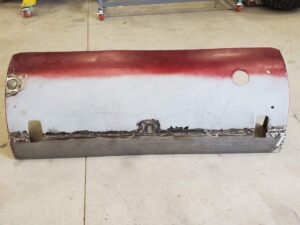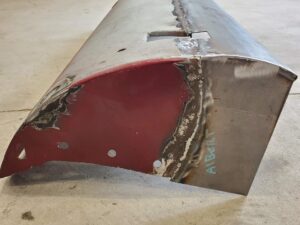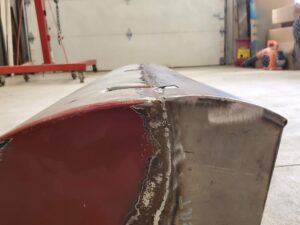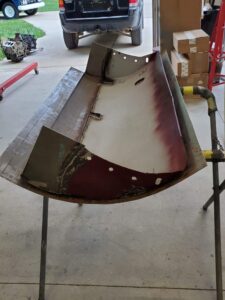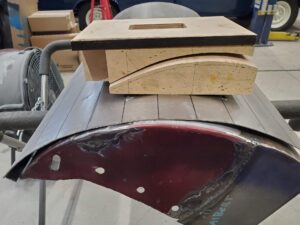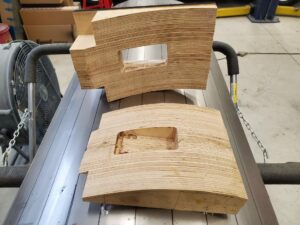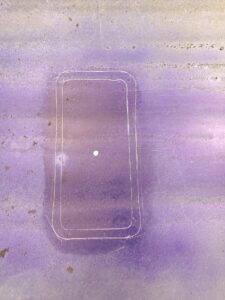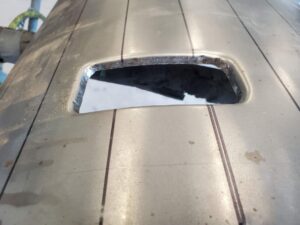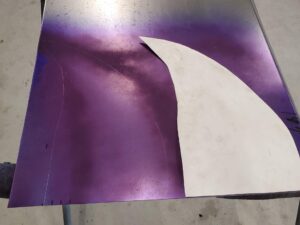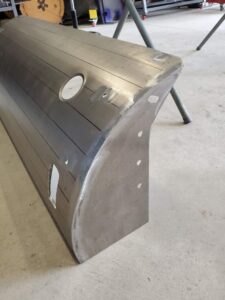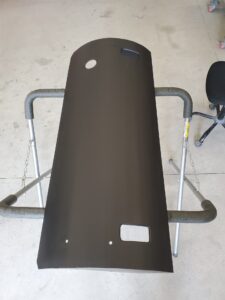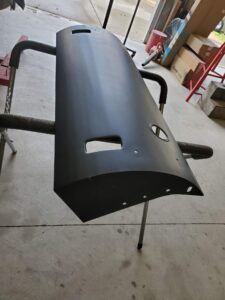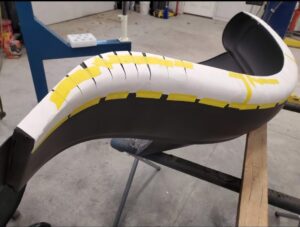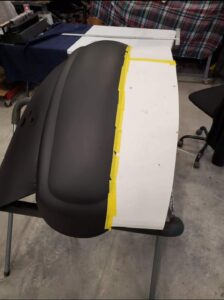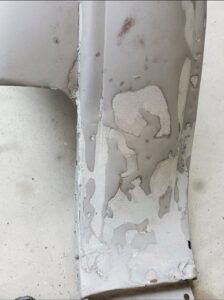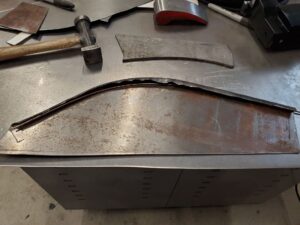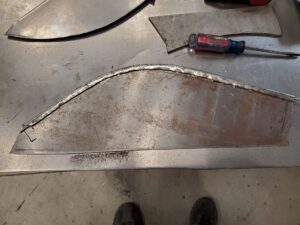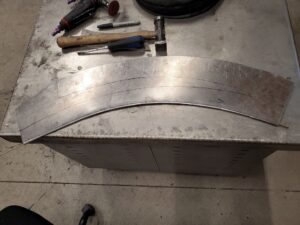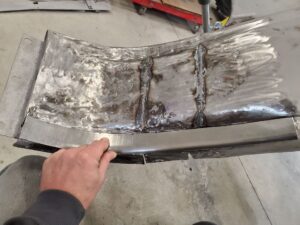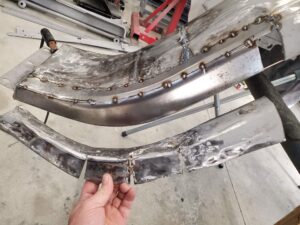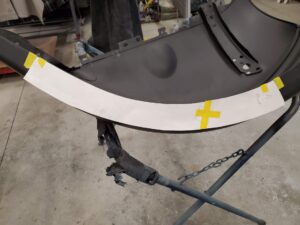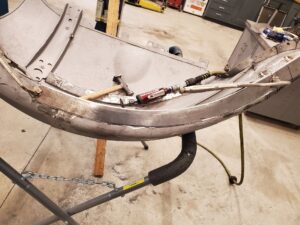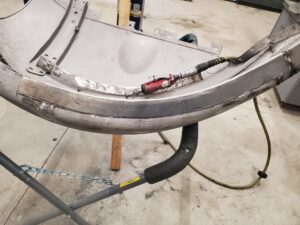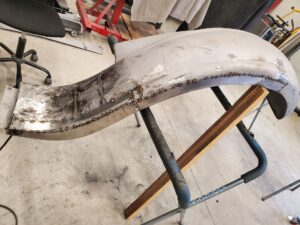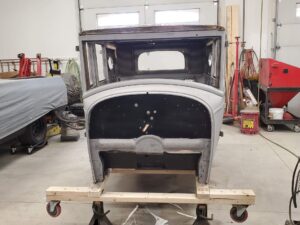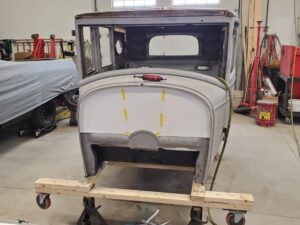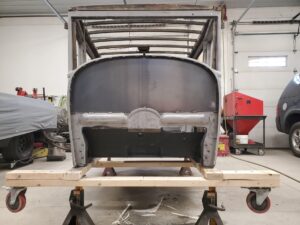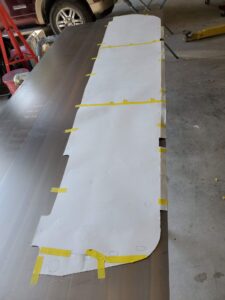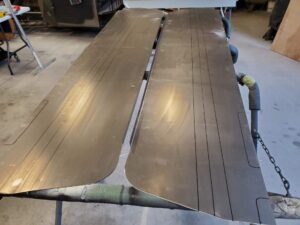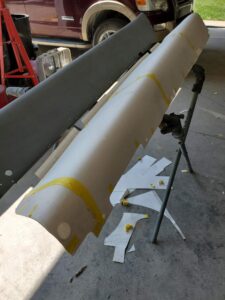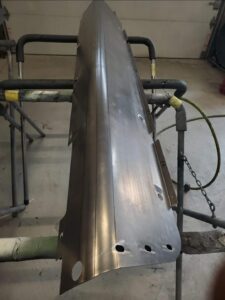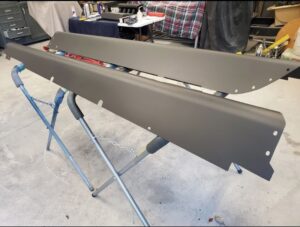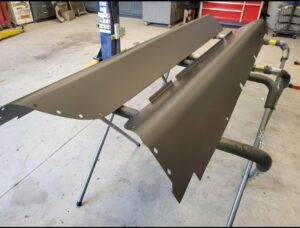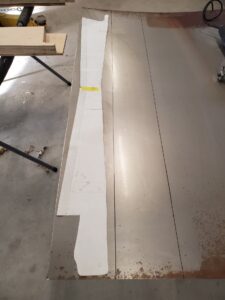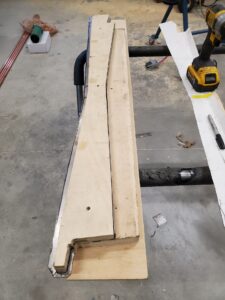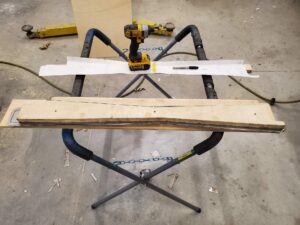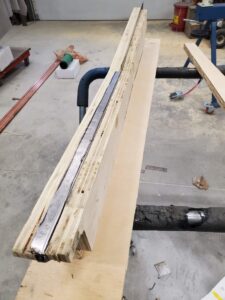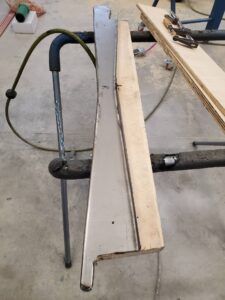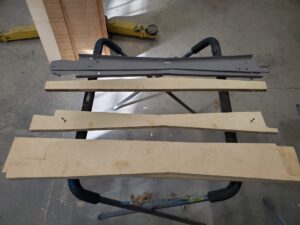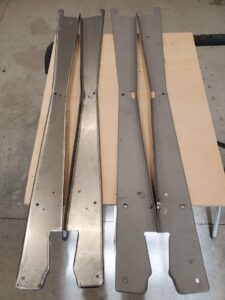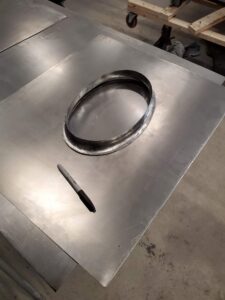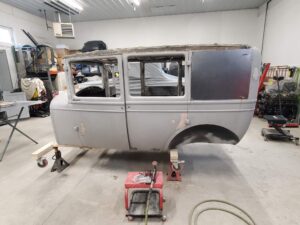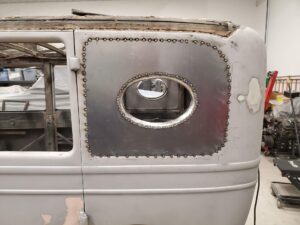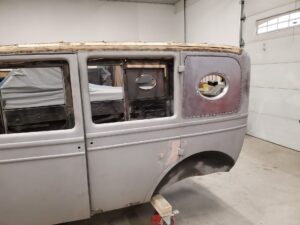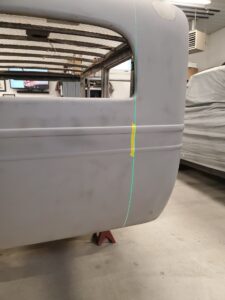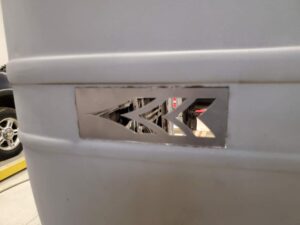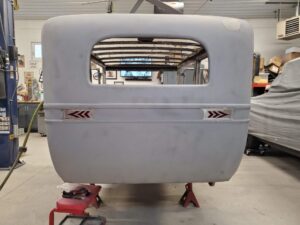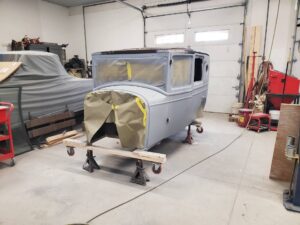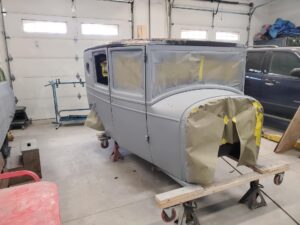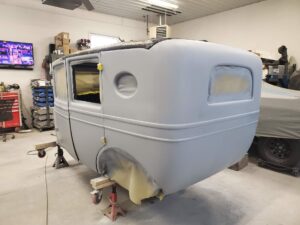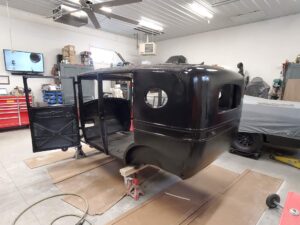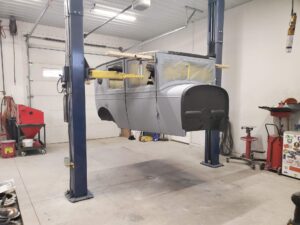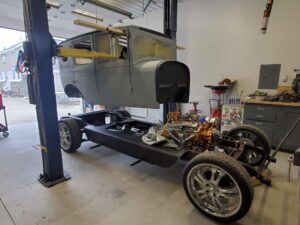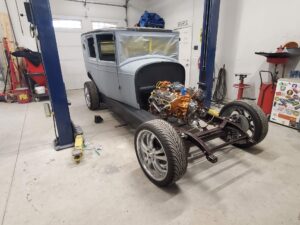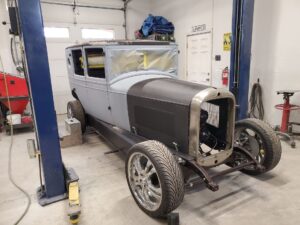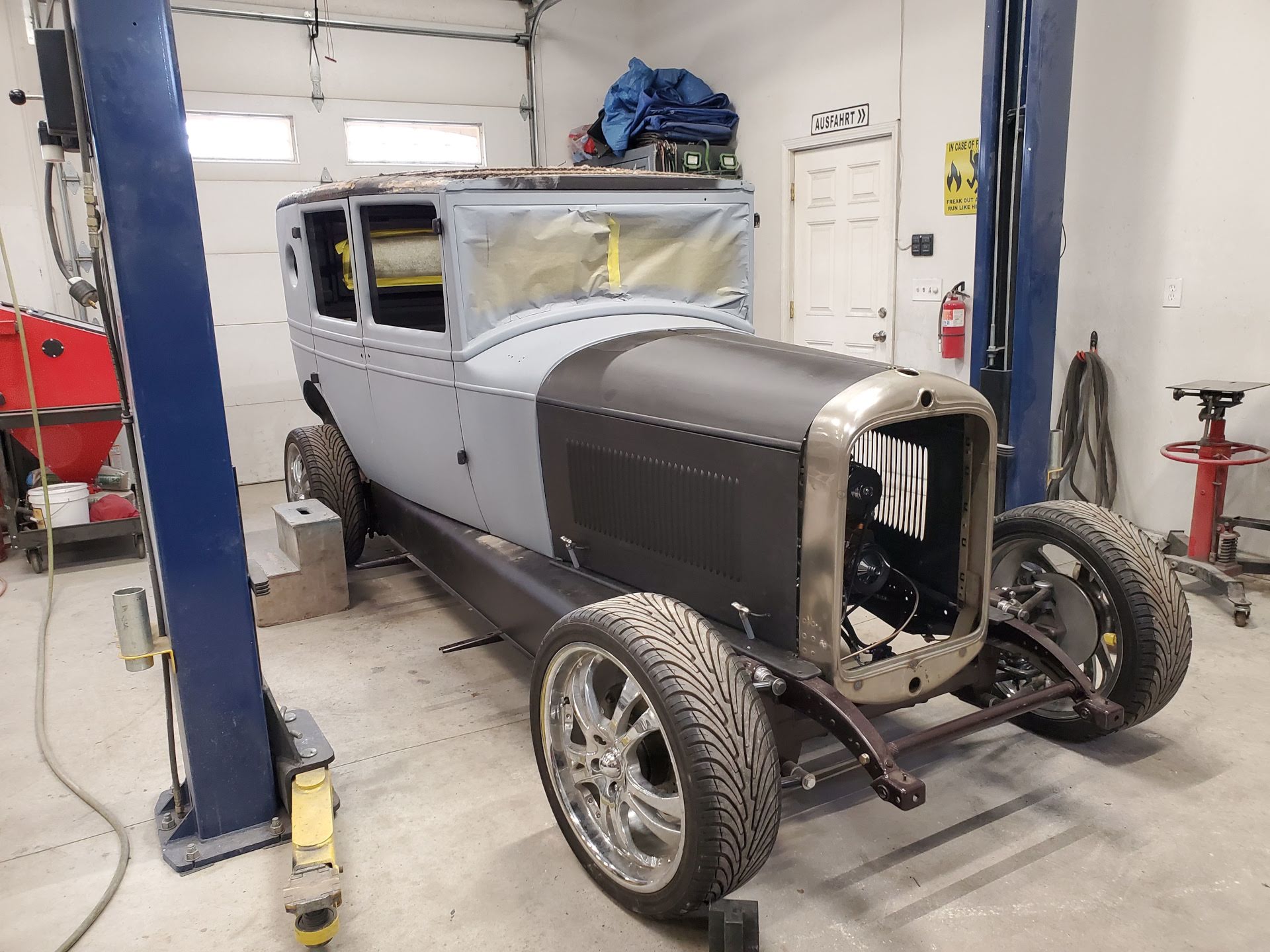
New Gas Tank Cover from Scratch
At first, the customer gave Card’s Hot Rods just a chunk of his 1927 Studebaker: a gas tank cover. It had been extended by six inches on the bottom, with a second panel buck-welded onto the original panel. However, the corners had not been rounded out, grounded properly, nor made flush. The weld seam had been warped beyond use by the time Tom got it. Without a part in the store to replace it, it was time to create a new one from scratch.
Templating
A paper template was made for the side pieces, and was used to line scribe with machinist’s die on a piece of sheet metal.
Sheet Metal
A new piece of sheet metal was formed for the main piece of the cover to the curve of the original gas tank cover. Dapping blocks were made custom to fit the curve of panel. These would be used to add inner flaring to the rectangular holes at either end of the panel. The sheet metal gets “sandwiched” between the two blocks to make the holes. The layout of the two rectangular holes were also traced using machinist’s die.
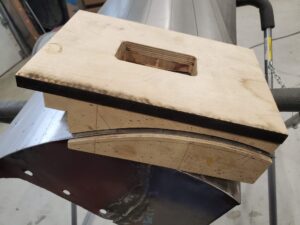
Welding and Epoxy
The side and main panels were welded together. In addition to the two rectangular holes, the main panel also had a dimple-die hole cut out for the gas lid. Once assembled, the panel was epoxied and prepared for high-build. Finally, the gas tank cover was installed onto the vehicle.
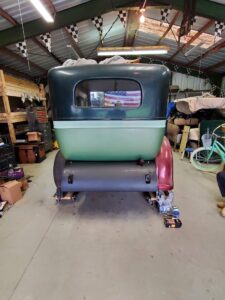
Repairing the fender
Later on, the same customer went to Card’s Hot Rods for several, additional sheet metal projects. The same customer needed upper and lower portions of the front passenger fender to be replaced custom; they couldn’t be bought. the entire project took 2 weeks, and was one of Tom’s most difficult sheet metal projects. The compound reverse curve is especially tricky to get right. The fender arrived at Card’s Hot Rods with clear evidence of damage. The body fill was ground out. A hammer and dolly got the damage taken care of. Here’s an image of the damage.
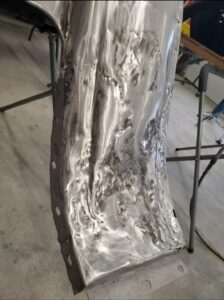
Templating
Paper templates were made using the curve of the original fender. These were used to create sheet metal templates to replace the excessively damaged parts. These new templates had wire beads added and folded in to improve the strength. Once the replacements were ready, they were welded into place.
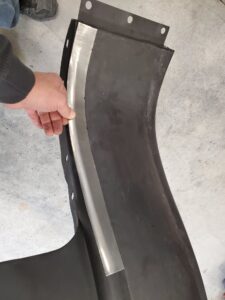
Besides the gas tank cover and fender, other custom sheet metal work by Card’s Hot Rods on this 1927 Studebaker include a custom window, hood skirts, running board panels, and engine firewall.
